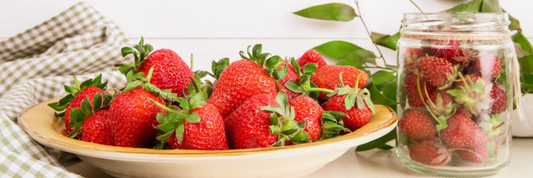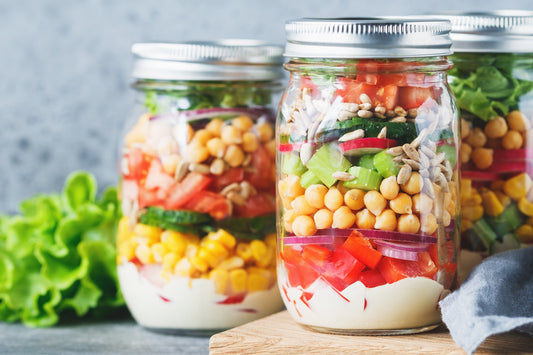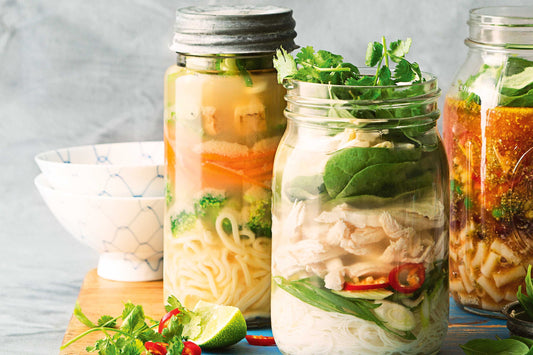Every day, millions upon millions of plastic cups are used and thrown away, filling landfills to overflowing capacity and contaminating our oceans. Recyclable paper cups are therefore chosen as an alternative to disposable cups to lessen waste from them. In our article today, we'll look at how recyclable cups assist to reduce waste.
Why need Recyclable Paper Cups?
What are recyclable paper cups?
Recyclable paper cups are paper cups that have been designed and manufactured in a way that allows them to be recycled into new paper products. This is done by using materials that are compatible with the recycling process and avoiding the use of harmful chemicals or coatings.
- Do paper cups have an expiry date? What happen when using paper cups expired?
- How does Food Packaging Impact to the Environment?
Recyclable Paper cups are made of:
- Paperboard: This forms the main body of the cup and is made from recycled paper pulp.
- Water-based coating: This replaces the traditional plastic lining and acts as a barrier to prevent liquids from soaking through the paperboard. This coating is typically made from plant-based materials.
- Biodegradable additives: These additives help the cup to decompose naturally in a compost environment.
Why exist recyclable paper cups?
Recyclable paper cups are more and more popular because of environmental reasons and consumer demand.
Environmental reasons:
- Compared to traditional plastic-lined paper cups, recyclable paper cups require less energy to produce and generate less waste.
- Recyclable paper cups utilize recycled paper pulp, contributing to the circular economy and reducing the need for virgin wood pulp.
- Some recyclable paper cups are also compostable, meaning they can be broken down naturally and turned into nutrient-rich soil.
Consumer demand:
- Consumers are becoming more conscious of the environmental impact of their choices and are actively seeking sustainable products. Recyclable paper cups offer a solution for those who want a convenient and environmentally friendly option.
- In some countries and regions, regulations are being implemented to reduce single-use plastics and waste. This has created a demand for more sustainable alternatives such as recyclable paper cups.
- Businesses are increasingly incorporating sustainability into their brand image and operations.

Are All the Paper Cups Recyclable? Types of paper cups that can be recycle
Not all paper cups are created equal when it comes to recyclability. Here are the types of paper cups that can be recycled:
- Paper cups with water-based coatings: These are the most common type of recyclable paper cup. They use a water-based coating instead of a traditional plastic lining, which makes them easier to recycle.
- Paper cups with PLA coatings: PLA, or polylactic acid, is a biodegradable plastic made from plant-based materials. Some paper cups use PLA coatings instead of water-based coatings. PLA-coated cups are typically compostable, but they may not be accepted in all recycling programs.
- Paper cups with no coating: These are the most environmentally friendly option, but they can be more difficult to find. Uncoated paper cups are typically used for cold beverages only, as they may leak with hot liquids.
Which disposable paper cups are the best for your coffee shop?
What make recyclable paper cups different with other paper cups?
Recyclable paper cups differ from other paper cups in the following ways, including coating, materials, End-of-life and impact to environement. Here is a table comparing recyclable paper cups with the non-recyclable:
|
Feature |
Recyclable Paper Cup |
Non-recyclable Paper Cup |
|
Coating |
Water-based, plant-based |
Plastic |
|
Materials |
May contain biodegradable additives for composting |
May contain non-recyclable components like plastic lids, sleeves, or foil embellishments |
|
Production |
May use soy-based or water-based inks for printing |
May use conventional inks with potentially harmful chemicals |
|
End-of-life |
Can be processed into new paper products |
Ends up in landfills |
|
Impact |
More sustainable, reduces environmental impact, and promotes resource conservation |
Less sustainable, contributes to landfill waste and greenhouse gas emissions |
|
Availability |
Becoming increasingly common |
Still the most common type |
|
Cost |
May be slightly more expensive |
Generally less expensive |
Life cycle of Recyclable Paper Cups
In contrast to non-recyclable paper cups, recyclable paper cups can be reborn after usage. The life cycle of a recyclable paper cup is shown below:
Production stage
The production stage of recyclable paper cups is linked to sustainably managed forests. Wood undergoes meticulous harvesting and processing to become paper pulp, the foundation of the cup's body. This pulp is then bleached and formed into sturdy paperboard sheets. Simultaneously, nature provides plant-based materials like corn starch or sugarcane, which are transformed into a water-based coating, later safeguarding the cup from liquids.
Discover process of paper cups manufacturing
Use phase
Filled with a refreshing beverage, the cup embarks on its quest to quench someone's thirst. It serves its purpose faithfully, providing a convenient and portable way to enjoy a drink.
After-use stage
After completing its mission, the cup ideally finds its way into a designated recycling bin. Waste management services collect these used cups along with other recyclables.
At Material Recovery Facilities, the collected materials are sorted, and the paper cups are separated from other recyclable items. They are then shredded and pulped, breaking down the fibers and separating the water-based coating. This coating can be used in other applications, offering another chance for a sustainable life.
After the treatmen, pulped cups become a slurry that is used to create new paper products. This could be anything from tissues and boxes to even new paper cups, completing the cycle and showcasing the power of recycling.
How to Recycle Paper Cups?
Can be used daily in coffee shop and restaurants, it’s important to know how to recycle right the paper cups. Both business who use recyclable to serve the drinks and customer who use the recyclable paper cups are responsible to take action.
Here is the guide to recycle paper cups for business and customer:
For business:
- Choose the right cups: Opt for cups with water-based coatings and the recycling symbol. Avoid those with plastic linings or sleeves. Look for certifications like Green Seal or SFI.
- Make it easy to recycle: Place clearly labeled bins near where cups are used. Consider separate bins for different materials and implement a "lid-off" policy.
- Educate your staff: Train them to identify recyclable cups, sort them properly, and answer customer questions.
- Partner with the right waste management company: Choose one that offers paper cup recycling services and discuss pick-up options.
- Promote your efforts: Inform customers about your commitment to sustainability and encourage participation. Share your achievements and inspire others.
For Customers:
- Know what's recyclable: Check for the recycling symbol and specific instructions on the cup or consult your local program's website.
- Prepare the cup: Remove non-recyclable components and rinse the cup if needed. Ensure it's clean and dry before recycling.
- Use designated bins: Place the prepared cup in the appropriate recycling bin, avoiding contamination with other materials.
10 wonderful paper cups recycling creative ideas for business and customers
How to know a paper cap is recyclable?
To know if a paper cup is recyclable, you can check for several key indicators:
- Recycling symbol: Look for the universal recycling symbol (three arrows chasing each other) on the cup. This is the most important indicator that the cup is intended for recycling.
- Material type: Paper cups made with water-based coatings are typically recyclable. Check the cup's label or packaging for information about its materials. Avoid cups with plastic linings or sleeves, as they often aren't recyclable.
- Certifications: Look for certifications like Green Seal or Sustainable Forestry Initiative (SFI) on the cup. These certifications indicate that the cup has been manufactured using sustainable practices and is likely to be recyclable.
- Local recycling program: Check with your local recycling program or waste management company to find out what types of paper cups they accept. Different programs may have different requirements.
In summary, reducing unnecessary waste can be achieved by using recyclable paper cups. To get the best efficiency, companies and consumers must recycle appropriately.









